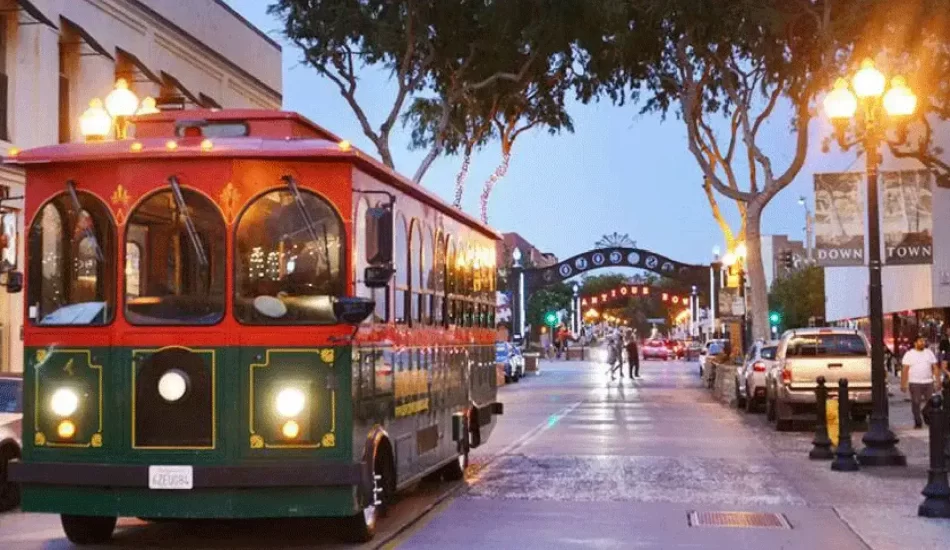|
|
Last Modified on Oct 16, 2023
What Is Pomona, CA, Famous For?
When most people think of Pomona, CA, they typically know that it’s close to Los Angeles and not a whole lot more. This city, however, is worth getting to know more about and even putting on your travel bucket list. Whether you’re looking for a terrific museum, fabulous dining, or a trip to the LA County Fair, Pomona, CA, has something for everyone.
The Early History of Pomona
Long before the bustling urban center that we know today, the Tongva Native Americans inhabited the area and used it as a trade route. Before the Louisiana Purchase in 1803, this portion of the Southwest was part of Mexico, known as Rancho San Jose. The city of Pomona was settled by Ygnacio Palomares and Ricardo Vejar in the 1830s, although the name itself wasn’t decided upon until 1875. In a contest to name the city, a horticulturist named Solomon Gates had the winning entry, and thus the town became named after an ancient Roman goddess. Pomona was the goddess of fruit, but the fruit trees that grow in the area today had yet to be planted.
In 1848, California became part of the United States due to the signing of the treaty of Guadalupe Hidalgo. Anglo-Americans had inhabited the area before this, but the sale of 12,000 acres of land to Louis Phillips in 1864 began the commercialization of the area and its eventual growth. Phillips was an immigrant who built a grand commercial building called the Phillips Block, which housed Hamburger’s, the largest department store in the West.
The Goddess of Fruit’s Namesake City Comes Into Its Own
The railroad industry was uniting the country in the late 1800s. With the arrival of Coachella Valley water, the next logical step for this land with a Mediterranean climate was the introduction of citrus farming. As of January 6, 1888, when the city was incorporated, it was already established as the anchor of the citrus growing region.
Citrus growers built great wealth over the years, and the area had one of the highest per capita income levels in the country by the 1920s, when Pomona was called the “Queen of the Citrus Belt.” Perhaps it was this wealth that attracted the movie studios from Hollywood in the 1940s. The studios used the town to preview movies to see how they would do with middle-class families. These studios considered Pomona residents to be a perfect example of this demographic across the entire country.
A “Did You Know” of Pomona, California
- Pomona’s Antique Row was featured in the 2003 version of The Cat in the Hat, which starred actor Mike Myers.
- 1941, the 1979 Steven Spielberg, film was partly set in Pomona, CA.
- The Fox Theatre, still a popular event venue, was one of the places Hollywood studios used for test screenings during its Golden Age. There is a line in the 1950 film Sunset Boulevard in which Joe Gillis says to Norma Desmond, “They’ll love it in Pomona.”
- Desi Arnaz and Lucille Ball went to Pomona on their honeymoon in 1940, and an episode of the show I love Lucy features the cast going “to the country” for a day … in Pomona. Today, the city is an urban center, but it was still considered to be quite rural not long ago.
- Some say that Walt Disney had plans to build Disneyland in Pomona. But, as the story goes, the city council refused his proposal because they didn’t think the park would succeed and would cause the city to incur heavy debt.
Six Must-See Spots in Pomona, CA
Whether you are new to the city, contemplating a move, or just visiting, there is plenty to do in the area. Consider the following activities and attractions as you plan your itinerary.
- La Casa Primero de Rancho San Jose is an adobe structure and is the oldest home in the Pomona Valley. The Historical Society of Pomona operates the home as a museum that offers visitors a glimpse back in time to the way area residents lived in the 1800s.
- The Pomona Raceway or Auto Club Raceway is a premier racing facility with a quarter-mile-long drag strip and room for around 40,000 spectators. It is best known for hosting racing’s yearly Winternationals.
- An adobe house that was home to one of Pomona’s settlers should also be on your visit list. The Ygnacio Palomares Adobe had fallen into disrepair for years, but today the city has restored the 1850 structure, and it operates as a museum where you can see what Mexican and Spanish rancho life was like in the early days.
- 57 Underground art gallery is a special place because it features work from area artists and experimental and classic works of art in its 2,000-meter gallery. This gallery is also free to visitors, and many area residents make it a frequent leisure activity.
- If you are interested in taking an art class at a famous cultural museum, the Latino Art Museum offers just that. The venue, which features artwork from area Latino artists and aims to educate visitors on Latin American culture, often rotates its exhibits, so there is always something new to see.
- If you love old houses and period architecture, the Phillips Mansion is a Second Empire style home built for Louis Phillips in 1875. Be sure to visit this old estate to get a taste of what life was like for the “richest man in Los Angeles County” in the late 1800s.
The City of Pomona Has Something for Everyone
Regardless of your background or reason for visiting or moving to Pomona, California, this bustling city is packed with culture, activities, and a diverse population. There are popular colleges, spectacular shopping areas, law firms, restaurants, entertainment, and nightlife. With so much going on in such proximity to Los Angeles, it is no wonder this city is considered a hidden gem in Southern California. So, if you are planning a visit to the area, be sure to pack heavy—you may not want to leave.





